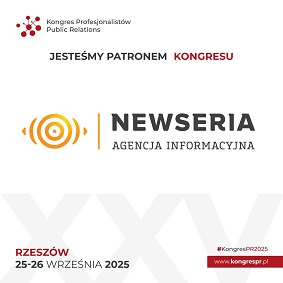Smart Railways Market to Surpass USD 1.14 Trillion by 2035, Driven by Infrastructure Upgrades and Digital Transformation
Smart railways market is booming, driven by digital transformation, infrastructure upgrades, and demand for efficient, sustainable rail solutions.
A substantial portion of this momentum is attributed to the adoption of advanced digital technologies such as the Internet of Things (IoT), artificial intelligence (AI), 5G connectivity, big data analytics, and automated train control systems. These technologies are enabling real-time monitoring, predictive maintenance, energy-efficient operations, and enhanced service personalization. Smart ticketing, intelligent signaling, and integrated transport platforms are also transforming the way passengers interact with railway services, creating a seamless travel experience from origin to destination. The convergence of digital rail infrastructure with environmental sustainability objectives is further accelerating the adoption of smart railway solutions across urban, intercity, and freight segments.
Unlock Insights: Request Your Sample and Stay Ahead with Our Comprehensive Report!
https://www.futuremarketinsights.com/reports/sample/rep-gb-231
Key Takeaways for the Smart Railways Market
The smart railways market is experiencing a robust surge driven by a global focus on transport modernization, enhanced safety, and operational efficiency. A remarkable CAGR through 2035 reflects increased implementation of digital systems across signaling, control, and passenger services. Governments and rail operators are embracing automation, data-driven decision-making, and smart energy solutions to meet growing urban mobility challenges. As demand for real-time service management and sustainable transportation intensifies, smart railways are positioned as a central pillar in future mobility ecosystems.
Emerging Trends in the Global Market
One of the key trends shaping the smart railways market is the rapid integration of AI-powered systems for predictive maintenance, dynamic scheduling, and real-time decision support. AI is enabling trains to self-diagnose technical faults, optimize energy consumption, and respond adaptively to traffic and weather conditions. Another prominent trend is the adoption of 5G and edge computing technologies, which are facilitating ultra-low latency communication and supporting complex train control systems across sprawling networks.
Passenger-centric innovations are also on the rise, including biometric ticketing, facial recognition boarding, and in-ride infotainment powered by high-speed connectivity. Digital twins and advanced simulation models are being employed to design smarter, more resilient railway infrastructure, reducing downtime and enhancing long-term planning. Furthermore, the integration of rail transport into multimodal mobility-as-a-service (MaaS) platforms is redefining how travelers plan, book, and pay for their journeys across various modes of transport.
Significant Developments in the Global Sector: Trends and Opportunities in the Market
The smart railways sector is at a transformative inflection point, with numerous countries investing in digitized, interconnected, and sustainable rail networks. In Europe, initiatives such as the EU’s “Shift2Rail” program are promoting interoperability, digitization, and automation across national borders. In Asia-Pacific, countries like China, Japan, and India are aggressively expanding high-speed rail corridors embedded with smart technology for real-time traffic control and safety automation.
Emerging economies in Latin America, the Middle East, and Africa are leveraging smart railway investments as part of broader economic development and urbanization strategies. Opportunities abound in the retrofitting of legacy infrastructure with smart sensors and control systems, the development of data-centric platforms for operational transparency, and the use of renewable energy to power next-generation rail networks. Freight operations are also being revolutionized through smart logistics platforms, GPS-enabled asset tracking, and automated loading and routing systems.
Recent Developments in the Market
Recent years have seen a surge of innovation and partnership activity in the smart railways market. In 2024, Siemens Mobility launched its AI-based Railigent X platform for advanced data analytics and predictive asset management. Hitachi Rail introduced a cloud-native train control system that integrates with national rail networks to enable smoother, safer, and more energy-efficient operations. Alstom unveiled an automated signaling solution designed for urban metro systems, significantly reducing headway times and enhancing capacity.
In India, the government expanded its SMART (Station Modernization and Revamp for Transformation) initiative to deploy digital passenger information systems, e-ticketing, and surveillance technology across major rail stations. Meanwhile, Deutsche Bahn in Germany rolled out an automated train operation pilot using AI-driven scheduling and remote diagnostics. The use of blockchain technology for ticketing and logistics, especially in Europe, has also gained momentum, enhancing transparency and minimizing fraud.
Extensive Market Research: Complete Report and Findings
https://www.futuremarketinsights.com/reports/smart-railways-market
Competition Outlook
The smart railways market is highly competitive, with a mix of global technology conglomerates, rail infrastructure providers, software innovators, and system integrators driving growth and innovation. Leading companies are focusing on strategic partnerships with governments and rail operators, expanding their global footprint, and investing in advanced R&D to deliver fully integrated smart railway ecosystems. Key players are continuously enhancing their digital service portfolios with cloud-based platforms, cybersecurity solutions, and passenger-focused mobile applications.
Major players in the smart railways market include Siemens AG, Alstom SA, Hitachi Ltd., Huawei Technologies Co. Ltd., Thales Group, IBM Corporation, Cisco Systems Inc., ABB Ltd., Wabtec Corporation, and Bombardier Inc. These companies are leading the charge in transforming traditional railway systems into connected, intelligent transport networks powered by data and automation.
Key Segmentations
By solution type, the market includes smart ticketing systems, passenger information systems, rail analytics, advanced security and surveillance, and smart traffic management. Smart ticketing and passenger information solutions are particularly dominant due to their direct impact on commuter experience and system efficiency.
By component, the market is segmented into hardware, software, and services. The software segment is expected to witness the fastest growth as AI, cloud computing, and big data analytics become central to railway digitalization efforts.
By application, key areas include passenger transit, freight management, and railway operations optimization. Passenger transit applications are leading the market, with rising demand for on-time performance, safety, and digital interfaces.
By region, North America and Europe lead in adoption due to robust infrastructure and early digitization initiatives, while Asia-Pacific is emerging as the fastest-growing market driven by government investments and large-scale rail projects.
Next-Gen Tech Industry Analysis Reports
Smart Mining Market Outlook 2025 to 2035
https://www.futuremarketinsights.com/reports/smart-mining-market
Smart Factory Market Outlook 2025 to 2035
https://www.futuremarketinsights.com/reports/smart-factory-market
Smart Card in Government Market Outlook from 2025 to 2035
https://www.futuremarketinsights.com/reports/smart-card-in-government-market
Smart Thermostat Market Outlook 2025 to 2035
https://www.futuremarketinsights.com/reports/smart-thermostat-market
Ankush Nikam
Future Market Insights, Inc.
+ +91 90966 84197
email us here
Visit us on social media:
LinkedIn
Facebook
YouTube
X
Legal Disclaimer:
EIN Presswire provides this news content "as is" without warranty of any kind. We do not accept any responsibility or liability for the accuracy, content, images, videos, licenses, completeness, legality, or reliability of the information contained in this article. If you have any complaints or copyright issues related to this article, kindly contact the author above.
Sparkling Books announce summer special offer
The Hidden Risk in Private Wells
Benzalkonium Chloride Market Size, Trends & Growth Forecast 2025 | DataM Intelligence
Więcej ważnych informacji
 Jedynka Newserii
Jedynka Newserii

 Jedynka Newserii
Jedynka Newserii

Handel

Komisja Europejska chce wprowadzić ujednolicone przepisy dotyczące wyrobów tytoniowych. Europosłowie mówią o kolejnej nadregulacji
Ministerstwo Zdrowia opracowało nowy projekt przepisów wprowadzających kolejne zakazy dotyczące wyrobów tytoniowych – całkowitą eliminację e-papierosów oraz zakaz aromatów w woreczkach nikotynowych. Najprawdopodobniej w ciągu kolejnych dwóch–trzech lat Polska będzie musiała implementować nową dyrektywę dotyczącą wszystkich produktów tytoniowych, nad którym niebawem ma rozpocząć prace Komisja Europejska. Europosłowie mówią o ryzyku chaosu legislacyjnego, nadregulacji i wskazują na zagrożenia związane z proponowaną podwyżką akcyzy.
Konsument
Za trzy miesiące ruszy w Polsce system kaucyjny. Wątpliwości budzą kwestie rozliczeń i podatków

Zaledwie trzy miesiące zostały do startu systemu kaucyjnego w Polsce. Kaucje obejmą szklane i plastikowe butelki oraz puszki z napojami. To duża zmiana dla producentów napojów, sklepów i konsumentów oraz pośredniczących w zbiórce operatorów systemów kaucyjnego. Na razie przepisy są na tyle niedoprecyzowane, że budzą wiele wątpliwości w kwestii rozliczania podatków czy rozliczeń z operatorami. Producenci będą musieli płacić podatek od niezwróconych butelek, co zwiększy ich koszty.
Transport
Rośnie skala agresji na polskich drogach. Problemem jest nie tylko nadmierna prędkość, ale też jazda na zderzaku

Za kilka dni zaczynają się wakacje, czyli statystycznie najniebezpieczniejszy czas na drogach. Wśród głównych przyczyn takich zdarzeń na prostych odcinkach drogi są nadmierna prędkość i jazda na zderzaku. Zarządca autostrady A4 Katowice–Kraków w ramach kampanii „Nie zderzakuj. Posłuchaj. Jedź bezpiecznie” zwraca uwagę na zjawisko agresji na polskich drogach i przypomina, że bezpieczeństwo zaczyna się od osobistych decyzji kierowcy.
Partner serwisu
Szkolenia

Akademia Newserii
Akademia Newserii to projekt, w ramach którego najlepsi polscy dziennikarze biznesowi, giełdowi oraz lifestylowi, a także szkoleniowcy z wieloletnim doświadczeniem dzielą się swoją wiedzą nt. pracy z mediami.










.gif)

 |
| |
| |
|